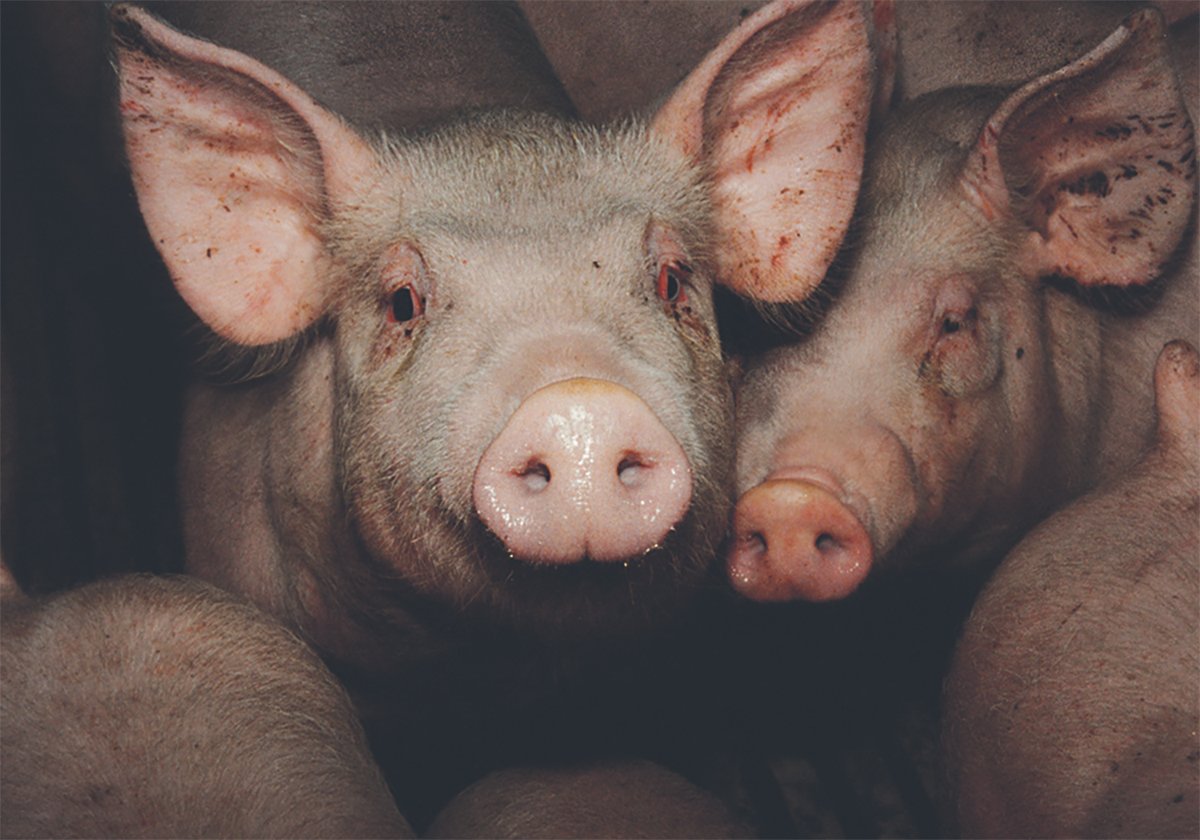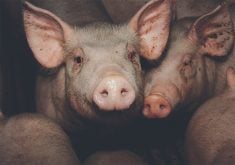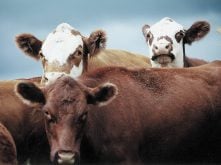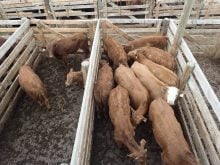Animal health authorities are encouraging livestock producers to consider vaccinating against anthrax, a deadly animal disease that could be on the rise this year.
Greg Douglas, Saskatchewan’s chief veterinary officer, said conditions are conducive to the spread of anthrax, especially in areas where flooding occurred and where previous anthrax outbreaks have been reported.
“With the amount of flooding that we have … anthrax spores will be coming to the surface, especially in areas where we’ve have previous anthrax outbreaks,” Douglas said.
Read Also

The Western Producer Livestock Report – October 30, 2025
Western Producer Livestock Report for October 30, 2025. See U.S. & Canadian hog prices, Canadian bison & lamb market data and sales insights.
“In some cases, where anthrax carcasses were buried … some of those burial sites are under water now, especially in the southeast part of the province.…”
He encouraged producers to talk with veterinarians about appropriate vaccination programs.
Anthrax is a bacterial disease caused by soil-borne spores.
The spores remain on the surface when flood waters recede and are ingested by livestock.
The disease is most common in cattle and bison, but it can also affect sheep, horses and goats. It results in rapid death so symptoms are rarely observed in live animals.
When they are, they include staggering, shortness of breath, trembling, collapse, convulsions and bloody discharge from the animal’s openings.
Producers often don’t know their herd has been exposed to anthrax until they find dead animals.
“(Animals) can be completely clinically normal one minute and then an hour later they can be dead and rigor mortised,” said Douglas.
Carcasses of dead animals should never be opened or moved if anthrax is suspected as a cause of death.
Bacillus anthracis, the bacteria that cause anthrax spores, are present in large quantities in the carcasses of infected animals.
Opening the carcass or allowing scavengers such as coyotes to gain access to the carcass will spread the spores and increase the likelihood of additional deaths.
Douglas stressed that the risk of infection is usually higher in areas that have had reported cases of anthrax during the past few years.
“Certainly, the burial sites from recent years are at higher risk … but (it’s also a concern) in other areas,” he said. “Anthrax spores can remain active for hundreds of years, so in some cases, producers in many areas might not even realize that there was an outbreak in their area a very long time ago.”
Douglas said vaccination is the best protection against the disease, preferably before herds are turned out on pasture.
The vaccination is usually effective for six months. Most cases of anthrax are reported in late summer, when standing water begins to disappear and livestock begin grazing on land that was underwater.
Anthrax cases must be reported to veterinarians or other animal health officials.
In Saskatchewan, four anthrax outbreaks were reported in 2010. Three of those were in southeastern Saskatchewan in the rural municipalities of Fillmore and Wellington.
The outbreak in the RM of Wellington, near Weyburn, Sask., killed dozens of bison from the same herd.
Douglas said 2006 was Saskatchewan’ worst anthrax year, when more than 100 outbreaks were reported. Approximately 800 animals were killed including cattle, bison, elk, horses, pigs and birds.
Officials from the Canadian Food Inspection Agency said anthrax outbreaks since 2006 have been reported on 50 farms in Manitoba, 170 farms in Saskatchewan and six farms in Alberta.
For more information, visit www.inspection.gc.ca/anthrax or call 800-442-2342.
Anthrax prevention tips
Here are additional steps to protect against anthrax infection:
•discuss vaccination with a veterinarian
•avoid feeding hay that is cut close to the soil
•do not use feed that has been in contact with the soil
•thoroughly clean and disinfect footwear and equipment after contact with contaminated soil
•remove work clothes and launder separately after tending to sick or deceased animals
•never move or open the carcasses of dead animals that may have been infected, and protect carcasses against scavenging animals
•report all sudden and unexplained animal deaths to a veterinarian or the nearest Canadian Food Inspection Agency office















